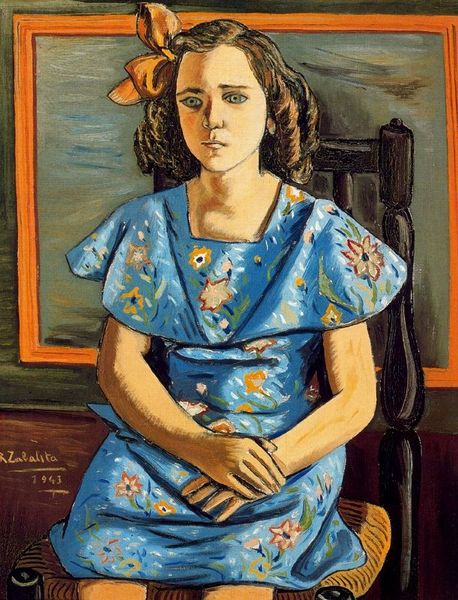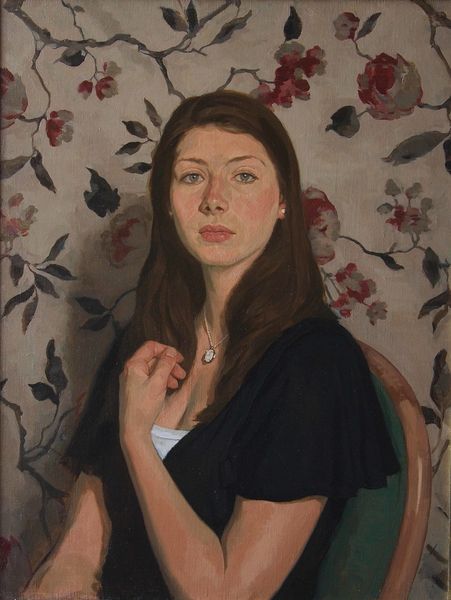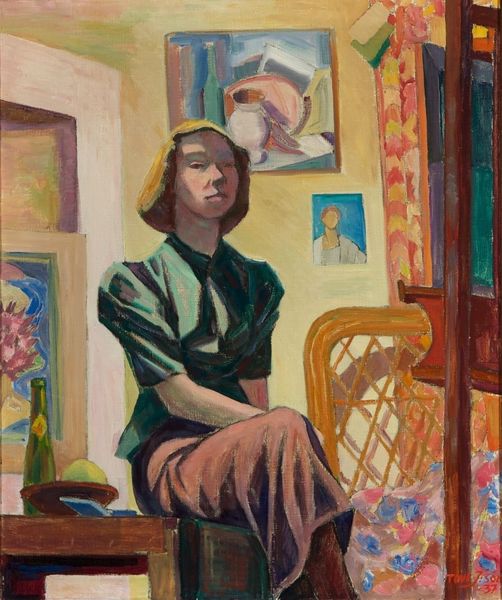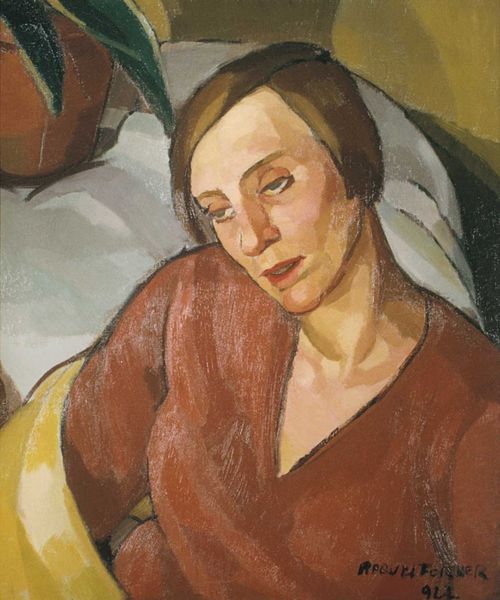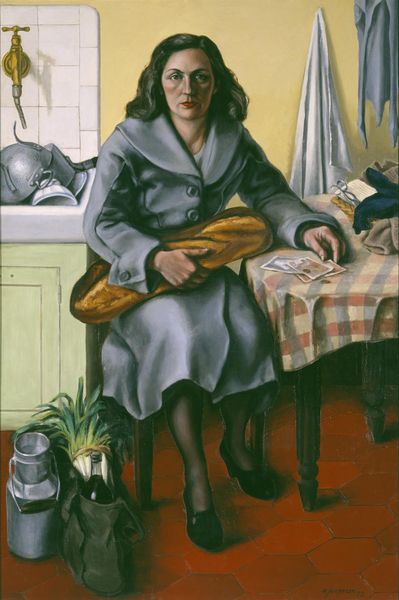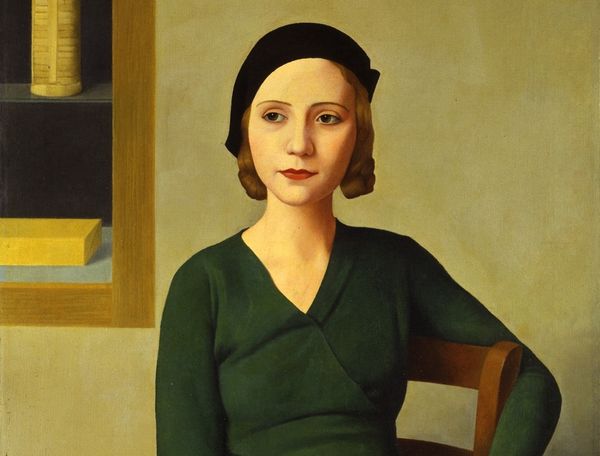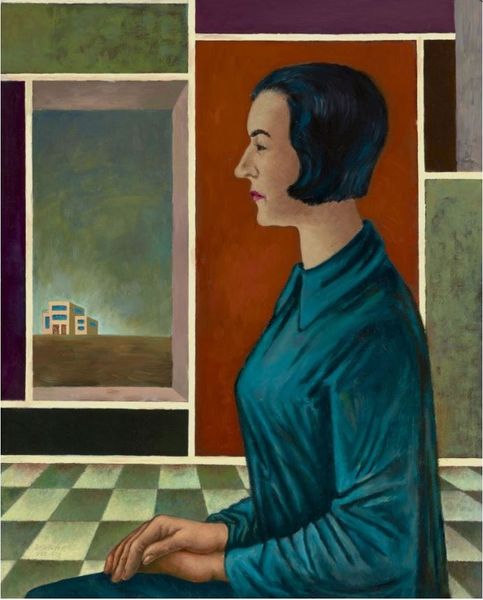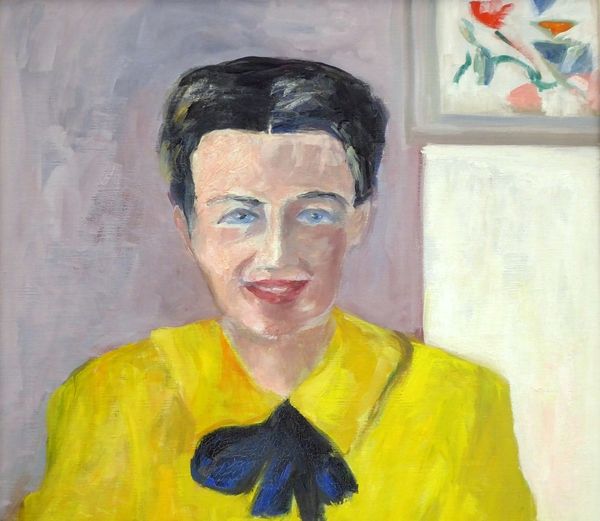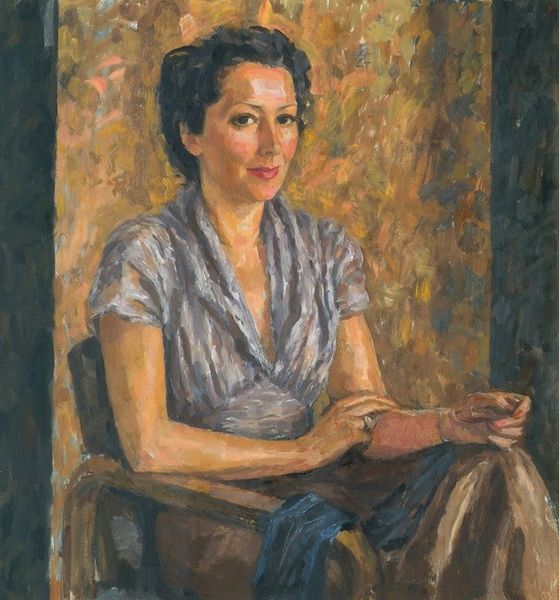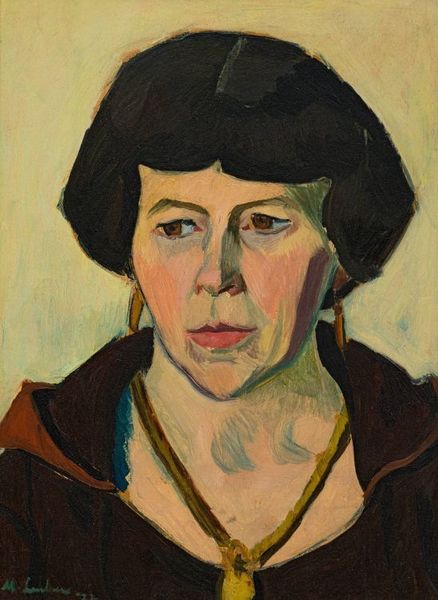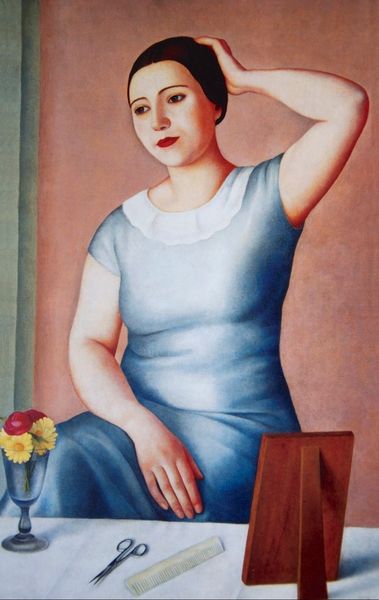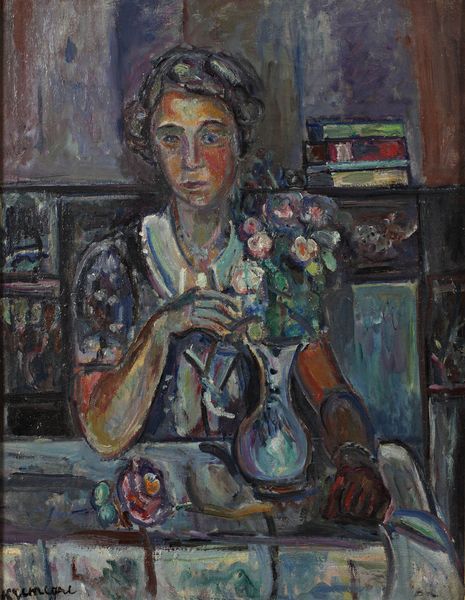
painting, oil-paint
#
portrait
#
painting
#
oil-paint
#
oil painting
#
modernism
#
realism
Copyright: Rita Angus,Fair Use
Editor: This is Rita Angus’ "Portrait of Betty Curnow," painted in 1942 using oil on canvas. It's currently housed at the Auckland Art Gallery. What strikes me is the flatness and almost naive realism; it’s both intimate and oddly detached. What do you see in this piece? Curator: Intriguing observation. Formally, I'm drawn to the painting’s deliberate structuring of planes and patterns. Observe the subject's face, rendered with a direct gaze and minimized shadowing, emphasizing the surface quality of the paint itself. How does the patterned blouse interact with the geometric background? Editor: It creates a visual tension, a busyness against the order of the shelves and framed pictures. Curator: Precisely. Note the layering of geometric shapes: rectangles of the books and picture frames. The artist manipulates colour to flatten the image, bringing foreground and background into a unified plane, and dissolving traditional perspective. Editor: So you're seeing it as a study of shapes and form more than as a realistic portrayal of a person? Curator: It's not either/or, but both. The subject is certainly present, yet the portrait transcends simple representation. Look at how the colours, like the contrasting red of the shirt and green of the skirt, assert themselves independently of the subject matter. Editor: I see that now, especially in the rendering of the hands. So the interplay of geometric forms, surface texture and color become the focal point, telling a different story than a straightforward likeness. Curator: Yes, the portrait uses the figure as a foundation upon which the artist can experiment with formal elements, prompting us to consider the very nature of representation itself. Editor: It definitely encourages you to really *look* at it, instead of just glancing. I'm glad to have seen the painting this way. Curator: Indeed, analyzing the formal structure has unveiled new facets of this work and the artist’s underlying aims.
Comments
No comments
Be the first to comment and join the conversation on the ultimate creative platform.
